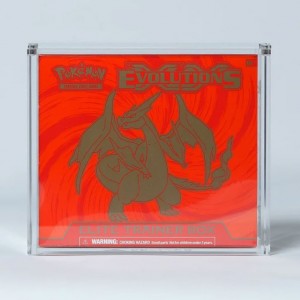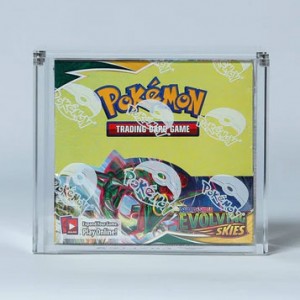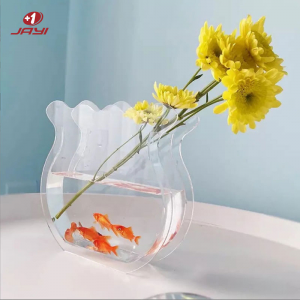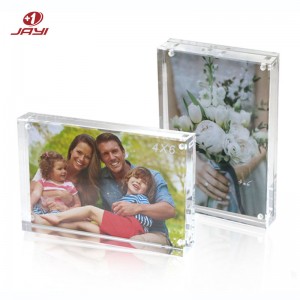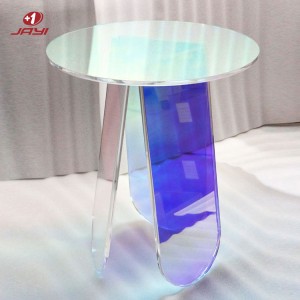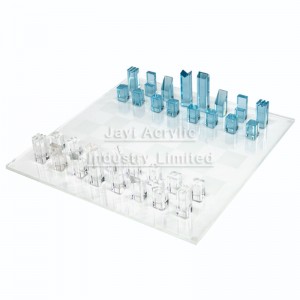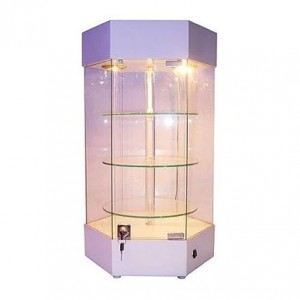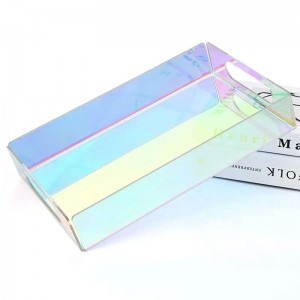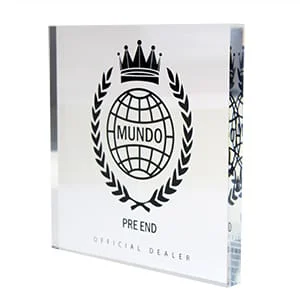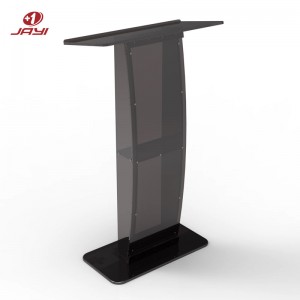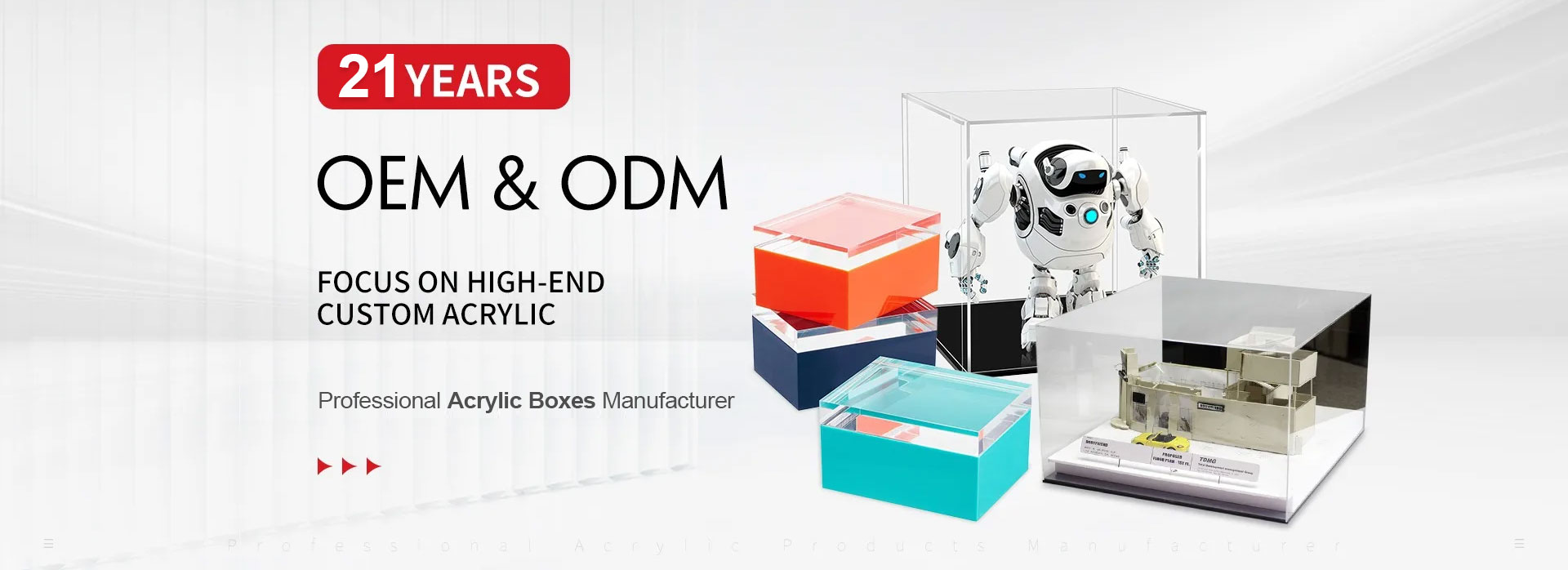
In the competitive world of product marketing and distribution, packaging is more than just a protective layer—it’s a silent salesperson, a brand ambassador, and a key factor in customer satisfaction. With countless packaging options available, two solutions stand out for their widespread use and distinct advantages: acrylic boxes and traditional packaging.
Whether you’re a small business owner launching a new product, an e-commerce seller looking to enhance unboxing experiences, or a brand manager aiming to elevate your product’s appeal, choosing between these two can significantly impact your bottom line and brand image.
This article dives deep into what each option offers, its unique benefits, and a head-to-head comparison to help you make an informed decision that aligns with your goals.
What are Acrylic Boxes?
Acrylic boxes, also known as plexiglass boxes or acrylic containers, are packaging solutions made from acrylic (polymethyl methacrylate, PMMA)—a transparent thermoplastic material renowned for its clarity and strength. Unlike glass, acrylic is lightweight, shatter-resistant, and more flexible, making it a practical choice for various packaging needs.
Acrylic boxes come in a range of shapes and sizes, from small display cases for jewelry, cosmetics, or electronics accessories to larger containers for toys, home decor, or premium gifts. They can be found in retail stores, boutiques, e-commerce shipments, and even as part of in-store display setups.
What sets acrylic boxes apart from other packaging materials is their ability to combine functionality with aesthetic appeal, allowing products to take center stage while remaining protected.
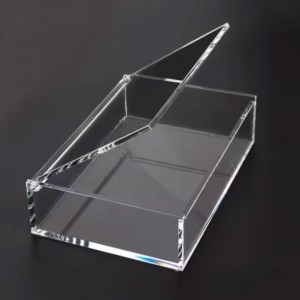
Acrylic Box
Benefits of Acrylic Boxes
1. Transparency and Visibility
One of the most significant advantages of acrylic boxes is their exceptional transparency. Acrylic offers up to 92% light transmission, which is even higher than some types of glass. This means customers can clearly see the product inside without opening the packaging—a crucial factor for impulse purchases and building trust. For products where appearance is a key selling point, such as handcrafted jewelry, premium chocolates, or high-end electronics, acrylic boxes showcase every detail, texture, and color of the item.
This visibility also reduces the need for excessive labeling or packaging inserts to describe the product, as the customer can see exactly what they’re buying. In retail settings, acrylic-packaged products stand out on shelves, as the transparency creates a clean, modern look that draws the eye compared to opaque traditional packaging.
2. Durability
Acrylic is a highly durable material that outperforms many traditional packaging options in terms of impact resistance. It is up to 17 times more shatter-resistant than glass and significantly more robust than paper, cardboard, or thin plastic. This durability makes acrylic boxes ideal for protecting fragile items during shipping, handling, and storage.
Unlike cardboard, which can tear, bend, or become damaged by moisture, acrylic boxes maintain their shape and structural integrity even in harsh conditions. They are also resistant to scratches (especially when treated with anti-scratch coatings) and can withstand repeated use—making them a great choice for reusable packaging or display cases that need to last for months or even years.
For businesses that ship products frequently, acrylic boxes can reduce the risk of damaged goods, lowering return rates and improving customer satisfaction.
3. Premium Appeal
Acrylic has long been associated with premium and high-end products. Its sleek, transparent appearance gives packaging a luxurious feel that elevates the perceived value of the item inside. Whether you’re selling a designer watch, a limited-edition fragrance, or an artisanal candle, an acrylic box can make the product seem more exclusive and desirable.
This premium appeal is particularly beneficial for brands looking to position themselves in the luxury market or differentiate their products from competitors using basic traditional packaging. In addition, acrylic boxes have a modern, minimalist aesthetic that aligns with current design trends, making them popular among brands targeting younger, design-conscious consumers.
The perceived value created by acrylic packaging can also justify higher price points, increasing profit margins for businesses.
4. Customization
Acrylic boxes offer extensive customization options to align with brand identity and product needs. They can be cut into virtually any shape or size, from square and rectangular to custom contours that match the product’s unique form. Businesses can add branding elements such as silk-screened logos, engraved messages, or colored accents to make the packaging more distinctive.
Acrylic boxes can also be modified with features like magnetic lids, hinges, or removable lids to enhance functionality and user experience. For example, a cosmetics brand might opt for a clear acrylic box with a branded magnetic lid to store and display makeup palettes, while a jewelry brand could use a custom-shaped acrylic case with engraved logos to package necklaces or earrings.
This level of customization allows businesses to create packaging that not only protects the product but also reinforces brand recognition and creates a memorable unboxing experience.
What is Traditional Packaging?
Traditional packaging refers to the time-tested packaging solutions that have been used for decades across various industries. The most common types include cardboard boxes, paper bags, corrugated boxes, paperboard cartons, wooden crates, and glass jars. These materials are widely available and have been optimized for different purposes—from corrugated boxes for shipping heavy items to paperboard cartons for food and beverage products.
Traditional packaging is deeply ingrained in supply chains worldwide, with established manufacturing processes and distribution networks. It is used by businesses of all sizes, from small local shops to large multinational corporations, and is suitable for a wide range of products, including food, clothing, electronics, household goods, and more. What defines traditional packaging is its focus on functionality, cost-effectiveness, and familiarity—consumers are accustomed to these materials, and businesses trust their reliability.
Benefits of Traditional Packaging
1. Cost-Effective
One of the primary advantages of traditional packaging is its affordability. Materials like cardboard, paper, and corrugated board are abundant and inexpensive to produce, especially when purchased in bulk. Unlike acrylic, which requires specialized manufacturing processes, traditional packaging materials are mass-produced, leading to lower per-unit costs.
This makes traditional packaging an ideal choice for businesses with tight budgets, high-volume production needs, or products with low profit margins. For example, a business selling affordable clothing or disposable household items would benefit from using cardboard boxes or paper bags, as the low packaging cost won’t eat into profits. Additionally, traditional packaging is lightweight (especially paper and cardboard), which reduces shipping costs compared to heavier materials like acrylic or glass.
2. Eco-Friendly
Many types of traditional packaging are highly eco-friendly, a key advantage in today’s market where consumers are increasingly conscious of sustainability. Materials like cardboard, paper, and paperboard are biodegradable and can be easily recycled—most regions have established recycling programs for these materials. Wooden crates are also renewable if sourced from sustainably managed forests.
In contrast, acrylic is a type of plastic that is not easily biodegradable and can be challenging to recycle. For brands looking to reduce their environmental footprint and appeal to eco-conscious customers, traditional packaging is a more sustainable choice.
Many businesses also use recycled materials for traditional packaging, further minimizing their impact on the environment. For example, a food brand might use recycled paperboard cartons for its cereal, or a retail store could offer paper bags instead of plastic to align with sustainability goals.
3. Versatility
Traditional packaging is incredibly versatile and can be adapted to suit almost any product type. Cardboard boxes can be customized with different thicknesses—from thin paperboard for lightweight items to heavy-duty corrugated board for fragile or heavy products. Paper bags come in various sizes and styles, from small gift bags to large shopping bags. Wooden crates are ideal for bulky items like furniture or industrial parts, while glass jars are perfect for food items like jams, pickles, or spices.
Traditional packaging can also be easily modified with additional features, such as inserts to hold products in place, windows to showcase items (similar to acrylic but at a lower cost), or moisture-resistant coatings for food products. This versatility makes traditional packaging suitable for a wide range of industries, from food and beverage to retail, electronics, and manufacturing.
4. Established Supply Chain
Traditional packaging benefits from a well-established and global supply chain. Manufacturers, distributors, and suppliers of materials like cardboard, paper, and corrugated board are abundant in almost every region, making it easy for businesses to source these materials quickly and reliably. This established supply chain also means shorter lead times—businesses can order traditional packaging in large quantities and receive it within a short period, which is crucial for meeting high-demand periods like holidays or sales events.
In contrast, acrylic packaging requires specialized manufacturers and may have longer lead times, especially for custom orders. Additionally, the widespread availability of traditional packaging means businesses can easily find local suppliers, reducing shipping costs and carbon emissions associated with importing materials. For businesses with complex supply chains or tight deadlines, traditional packaging’s reliable sourcing is a significant advantage.
Acrylic Boxes vs. Traditional Packaging: A Detailed Comparison
If at all you prefer acrylic boxes or are going for traditional packaging, quite a few things must be kept in consideration, like the products or audience that accept the products, your budget, and the identity of the brand. Below is a detailed comparative analysis of the two packaging options to make an informed decision.
1. Durability and Protection
Acrylic Boxes: As mentioned earlier, acrylic boxes are highly durable and resistant to shattering. They can withstand impact, moisture, and minor scratches (with anti-scratch coatings), making them ideal for protecting fragile or high-value items like electronics, jewelry, or glassware. Acrylic maintains its structural integrity even in harsh conditions, such as extreme temperatures or rough handling during shipping. However, while acrylic is shatter-resistant, it can crack under severe pressure, and deep scratches may be difficult to remove without professional polishing.
Traditional Packaging: The durability of traditional packaging varies widely depending on the material. Corrugated cardboard is relatively durable for shipping, offering cushioning and protection against minor impacts, but it is susceptible to moisture, tearing, and bending. Paperboard is thinner and less durable, suitable only for lightweight items. Wooden crates are very durable but heavy and expensive. Glass jars, on the other hand, are fragile and can shatter easily. Overall, traditional packaging provides adequate protection for most products but may not be as reliable as acrylic for fragile or high-value items, especially during long shipping journeys.
2. Aesthetic Appeal
Acrylic Boxes: Acrylic boxes excel in aesthetic appeal due to their transparency, sleekness, and modern look. They showcase the product’s details clearly, creating a premium and luxurious feel. Customization options like engraved logos or colored accents further enhance their visual appeal. Acrylic boxes are perfect for brands looking to stand out on retail shelves or create a memorable unboxing experience. They are particularly popular for premium products like jewelry, cosmetics, and designer gifts.
Traditional Packaging: Traditional packaging has a more familiar and utilitarian aesthetic. While it can be customized with printed designs, logos, or colors, it lacks the transparency and premium feel of acrylic. Cardboard boxes can be printed with vibrant graphics, but they are still opaque and may not showcase the product as effectively. Paper bags are often branded but have a simple, functional look. Traditional packaging is suitable for brands that prioritize affordability over premium aesthetics or sell products where appearance is not the primary selling point.
3. Cost Considerations
Acrylic Boxes: Acrylic boxes are more expensive than traditional packaging. The cost of acrylic material itself is higher, and specialized manufacturing processes (like cutting, shaping, and customizing) add to the expense. Per-unit costs can be significantly higher, especially for small businesses or high-volume orders. However, the premium appeal of acrylic can justify higher price points for products, potentially offsetting the packaging cost.
Traditional Packaging: Traditional packaging is far more cost-effective. Materials like cardboard and paper are inexpensive, and mass production reduces per-unit costs. Even with customization like printing or window cutouts, traditional packaging remains affordable. This makes it ideal for businesses with tight budgets, high-volume production, or products with low profit margins. Shipping costs are also lower due to the lightweight nature of most traditional packaging materials.
4. Environmental Impact
Acrylic Boxes: Acrylic is a type of plastic derived from petroleum, making it non-biodegradable. While some acrylic can be recycled, recycling processes are not as widespread or efficient as those for paper or cardboard. Acrylic boxes also have a higher carbon footprint during manufacturing compared to traditional materials. For brands prioritizing sustainability, acrylic may not be the best choice unless it is reused multiple times (e.g., as a display case).
Traditional Packaging: Many traditional packaging materials are eco-friendly. Cardboard, paper, and paperboard are biodegradable and widely recyclable. Using recycled materials further reduces environmental impact. Wooden crates are renewable if sourced sustainably. Even glass jars can be reused or recycled. Traditional packaging aligns with the growing consumer demand for sustainability and is a better choice for brands looking to reduce their carbon footprint.
5. Customization and Branding
Acrylic Boxes: Acrylic boxes offer extensive customization for branding. They can be cut into custom shapes, engraved with logos, silk-screened with graphics, or colored to match brand colors. Features like magnetic closures or removable lids can also be added to enhance functionality and brand identity. The transparency of acrylic allows branding elements to stand out while still showcasing the product. However, customization for acrylic boxes is more expensive and may have longer lead times.
Traditional Packaging: Traditional packaging is also highly customizable, but at a lower cost. Cardboard boxes can be printed with full-color graphics, logos, and brand messages. Paper bags can be branded with stamps or prints. Window cutouts, inserts, and different textures can also be added. The main limitation is that traditional packaging is opaque, so branding must be done on the exterior rather than complementing the product’s appearance. Customization lead times are shorter, and there are more suppliers available for custom traditional packaging.
FAQs

Are acrylic boxes suitable for shipping fragile items?
Yes, acrylic boxes are excellent for shipping fragile items. They are up to 17 times more shatter-resistant than glass and more robust than paper or cardboard. With anti-scratch coatings, they resist minor damage and maintain structural integrity against moisture and rough handling, reducing damaged goods and return rates during shipping.
Is traditional packaging more eco-friendly than acrylic boxes?
Generally, yes. Most traditional packaging materials (cardboard, paper, paperboard) are biodegradable and widely recyclable, with established local recycling programs. Wooden crates are renewable if sustainably sourced. Acrylic, a petroleum-based plastic, is non-biodegradable, and its recycling is less widespread and efficient, making it less eco-friendly.
Can small businesses afford acrylic boxes for their products?
It depends on the product and budget. Acrylic boxes are more expensive than traditional options due to higher material and manufacturing costs, especially for custom or high-volume orders. They work for small businesses selling premium items (jewelry, cosmetics) where their premium appeal justifies higher prices, offsetting packaging costs.
Which packaging is better for retail shelf appeal?
Acrylic boxes outperform traditional packaging in retail shelf appeal. Their 92% light transmission showcases product details clearly, creating a premium, modern look. Customizable with engraved logos or colored accents, they draw attention. Traditional packaging, though printable, is opaque and lacks the transparency and luxury feel to highlight products as effectively.
Does traditional packaging offer enough customization for branding?
Yes, traditional packaging provides ample cost-effective customization for branding. Cardboard boxes can have full-color graphics, logos, and messages; paper bags can be branded with stamps. Add-ons like window cutouts or inserts enhance functionality. While opaque (branding is exterior-only), it has shorter lead times and more suppliers than acrylic, suiting branding needs on a budget.
What is the use of an acrylic box?
Acrylic boxes serve as protective and decorative packaging/display solutions. They showcase products (jewelry, cosmetics, premium gifts) via 92% light transmission, boosting visibility for impulse buys. Their shatter-resistant, moisture-proof nature protects fragile items during shipping/storage. Customizable (shapes, logos, closures), they enhance branding and unboxing experiences, ideal for retail displays and premium product packaging.
Are acrylic containers better than plastic?
It depends on needs. Acrylic outperforms standard plastic in clarity (92% light transmission vs. opaque/translucent plastic), durability (17x more shatter-resistant than glass, sturdier than thin plastic), and premium appeal. But standard plastic is cheaper, and some types (PET) are more recyclable. Acrylic suits premium displays/protection; plastic fits budget-friendly, high-volume, or eco-focused (recyclable variants) uses.
Conclusion
Choosing between acrylic boxes and traditional packaging ultimately depends on your business goals, product type, budget, and target audience.
Acrylic boxes are the ideal choice if you sell premium, high-value, or visually appealing products and want to elevate your brand’s image, enhance product visibility, and provide maximum protection. They are perfect for luxury goods, jewelry, cosmetics, and items where unboxing experience and shelf appeal are critical. However, they come with a higher cost and have a larger environmental footprint.
On the other hand, traditional packaging is the better option if you prioritize affordability, sustainability, versatility, and reliable sourcing. It is suitable for most everyday products, high-volume orders, and businesses with tight budgets. Traditional packaging also aligns with eco-conscious consumer trends, making it a great choice for brands focusing on sustainability.
In some cases, a hybrid approach may work best—using acrylic boxes for retail displays and traditional packaging for shipping, for example. By evaluating your specific needs and weighing the pros and cons of each option, you can choose the packaging solution that best supports your brand and drives success.
About Jayi Acrylic
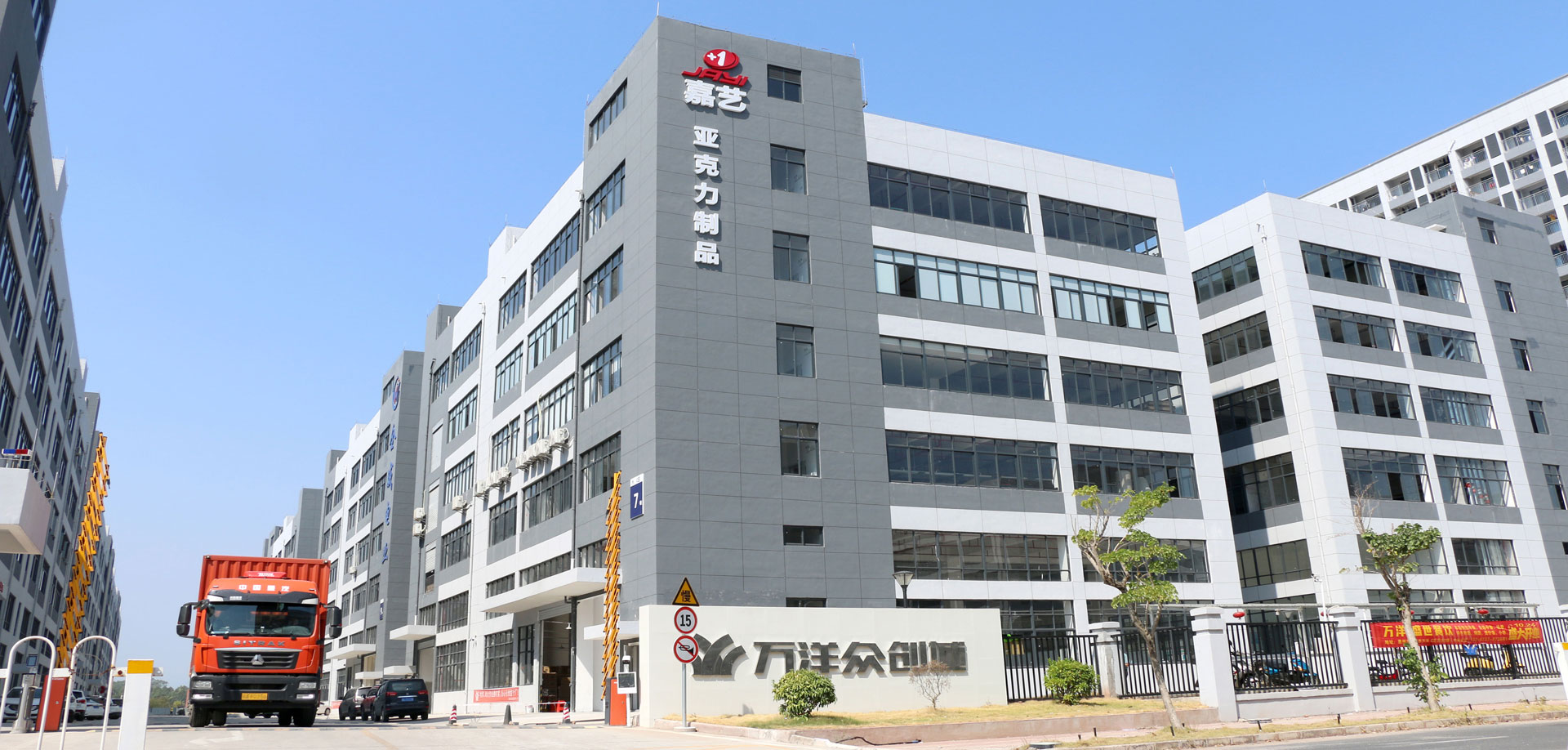
Jayi Acrylic Industry Limited stands as a leading manufacturer of custom acrylic products in China, boasting over 20 years of rich experience in design and production. We specialize in delivering high-quality acrylic items, including various custom acrylic boxes and custom acrylic displays, along with comprehensive acrylic engineering solutions.
Our expertise spans from initial design conceptualization to precision manufacturing, ensuring each product meets strict quality standards. To meet diverse customer needs across industries like retail, cosmetics, and jewelry, we also offer professional OEM and ODM services—tailoring solutions to specific branding and functional requirements.
For decades, we’ve cemented our reputation as a reliable partner, leveraging advanced technology and skilled craftsmanship to deliver consistent, premium acrylic products globally.
Have Questions? Get A Quote
Want to Know More About Acrylic Boxes?
Click the Button Now.
You Might Also Like Other Custom Acrylic Products
Post time: Oct-31-2025

